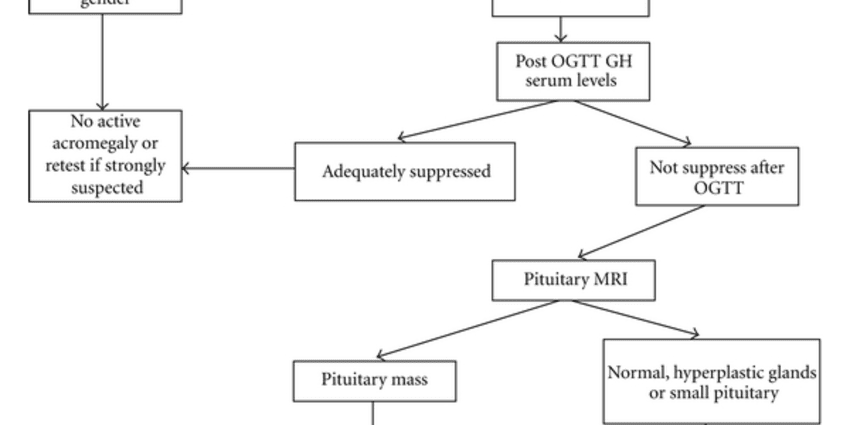Diagnosis of acromegaly
The diagnosis of acromegaly is quite easy (but only when you think about it), since it involves taking a blood test to determine the level of GH and IGF-1. In acromegaly, there is a high level of IGF-1 and GH, knowing that the secretion of GH is normally intermittent, but that in acromegaly it is always high because it is no longer regulated. The definitive laboratory diagnosis is based on the glucose test. Since glucose normally decreases the secretion of GH, oral administration of glucose makes it possible to detect, by successive blood tests, that, in acromegaly, the secretion of growth hormone remains high.
Once the hypersecretion of GH is confirmed, it is then necessary to find its origin. Today, the gold standard is an MRI of the brain which may show a pituitary gland tumor. In very rare cases, it is a tumor located elsewhere (most often in the brain, lung or pancreas) that secretes another hormone acting on the pituitary gland, GHRH, which stimulates the production of GH. A more extensive assessment is then carried out to find the origin of this abnormal secretion.










